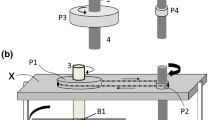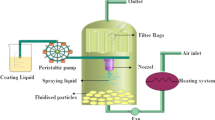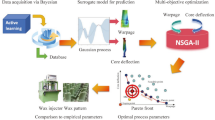Abstract
This research deals with the analysis of the characteristics of cotton collocation and the quality characteristics of rotor spinning. To achieve appropriate cotton collocation, the Taguchi method was employed in the experimental design in which the cotton characteristics which were measured with a high volume instrument were used to design the experiment plan according to the relevant orthogonal array. To satisfy the requirements of the modern textile industry, a Rieter open-end (OE) machine was used in the factory to spin the rotor yarn; the yarns thus produced were then measured using an Uster Tester-3, to obtain relevant yarn characteristics. For the characteristic analysis, intellectual control theory was employed to assess the factorial analysis, and the results indicated that, using neural network training and test, the mean square error obtained from the network was below 0.1. Genetic algorithms were also applied to seek one set of optimization characteristics from among cotton quality characteristics. In this way, the cotton properties and the OE rotor yarn characteristics prediction model was structured according to the result obtained by the intellectual control system. The final yarn characteristics were determined by the known cotton collocation conditions. The cotton properties and the OE rotor yarn characteristic prediction model combine the characteristics of neural networks and genetic algorithms by using the evolve perceptron neural network as the basic framework. Compared with the application of a back propagation neural network, it possesses better prediction accuracy and faster convergence. The result indicated that this research is applicable configuring the yarn characteristic prediction model system.
Similar content being viewed by others
References
Ethridge MD, Towery JD, Hembree JF (1982) Estimating functional relationships between fiber properties and the strength of open-end spun yarns. Tex Res J 52(1):35–44
Zhu R, Ethridge MD (1997) Predicting hairiness for ring and rotor spun yarns and analyzing the impact of fiber properties. Tex Res J 67(9):694–698
Ryan TP (1988) Taguchi’s approach to experimental design: some concerns. Qual Prog pp 34–36
Peace GS (1993) Taugchi methods. A hands-on approach to quality engineering. Addison-Wesley, Boston, pp 113–337
Chen PW, Liang TC, Yau HF, Sun WL, Wang NC, Lin HC, Lien RC (1998) Classifying textile faults with a back-propagation neural network using power spectra. Tex Res J 68(2):121–126
Vangheluwe L, Sette S, Kiekens P (1996) Modelling relaxation behaviour of yarns, part II: back propagation neural network model. J Text I 87(2):305–310
Cho SB (1997) Neural-network classifiers for recognizing totally unconstrained handwritten numerals. IEEE Trans Neural Netw 8(1):43–53
Barrett GR, Clapp TG, Titus KJ (1996) An on-line fabric classification technique using a wavelet-based neural network approach. Tex Res J 66(8):521–528
Fan KC, Wang YK, Chang BL, Wang TP, Jou CH, Kao IF (1998) Fabric classification based on recognition using a neural network and dimensionality reduction. Tex Res J 68(3):179–185
Goldberg DE (1989) Genetic algorithms in search, optimization, and machine learning. Addison-Wesley, Boston
Byrne DM, Taguchi S (1987) The Taguchi approach to parameter design. Qual Prog pp 19–26
Maniezzo V (1994) Genetic evolution of the topology and weight distribution of neural networks. IEEE Trans Neural Netw 5(1):39–53
Sette S, Boullart L, Langenhove LV (1996) Optimising a production process by a neural network/genetic algorithm approach. Eng Appl Artif Intell 9(6):681–689
Sette S, Boullart L, Langenhove LV, Kiekens P (1997) Optimizing the fiber-to-yarn production process with a combined neural network/genetic algorithm approach. Tex Res J 67(2):84–92
Acknowledgements
The authors would like to sincerely thank the editor, Dr. B John Davies, for his lots of valuable directions. Also, the authors wish to thank the National Science Council, ROC, for financial support through grant No. NSC 92-2212-E-011-025.
Author information
Authors and Affiliations
Corresponding author
Rights and permissions
About this article
Cite this article
Kuo, CF.J., Tien, CP. & Chiu, CH. Analytical research on intellectual control of yarning characteristics for cotton collocation and rotor spinning. Int J Adv Manuf Technol 32, 764–773 (2007). https://doi.org/10.1007/s00170-005-0396-z
Received:
Accepted:
Published:
Issue Date:
DOI: https://doi.org/10.1007/s00170-005-0396-z




